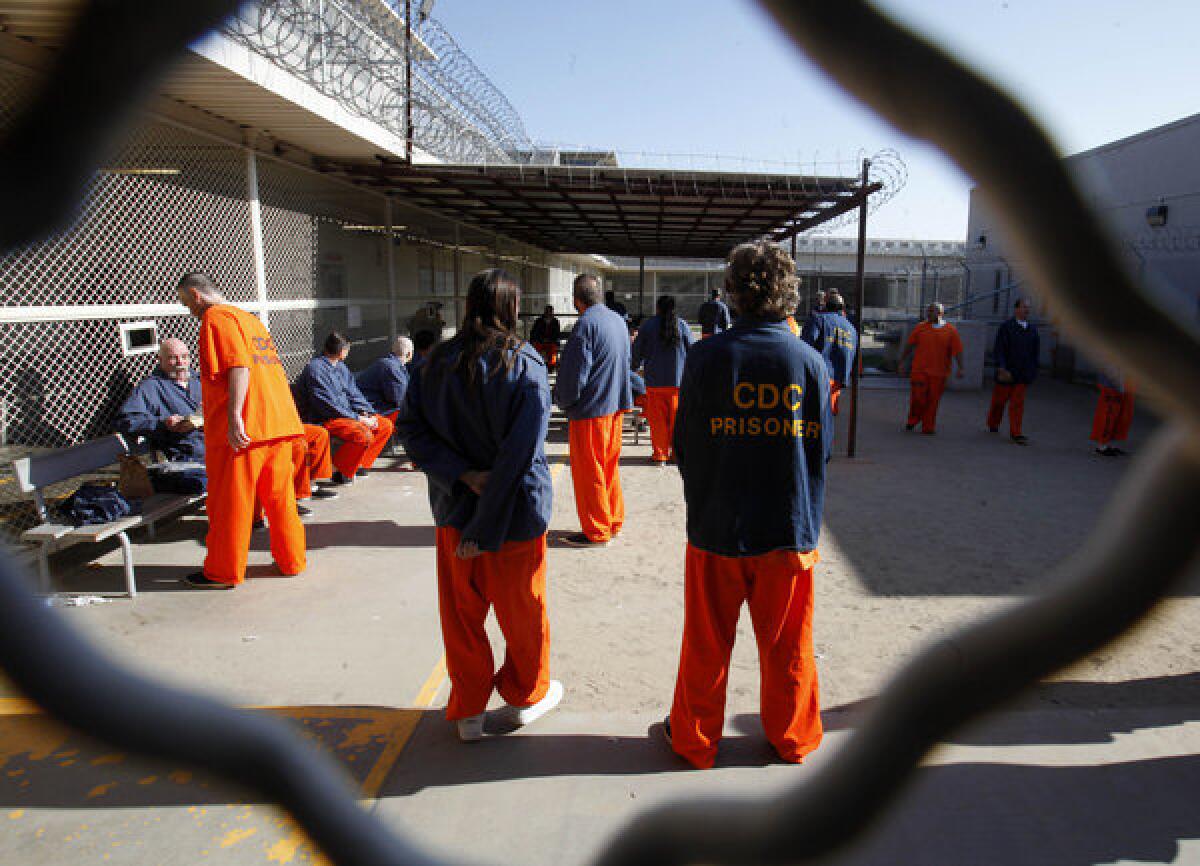California’s prison mess

Under a 4-year-old order to reduce the state’s prison population, Gov. Jerry Brown is preparing, finally, to file a plan with the court outlining how he and the California Department of Corrections and Rehabilitation intend to comply. They have been dragging their feet long enough — and in fact are continuing to do so. They lost their request last week to block the order and are now pressing an appeal to the U.S. Supreme Court to get out from under a Dec. 31 deadline. The longer they wait, the more difficult it will be for communities to safely reabsorb former inmates and for the state’s criminal justice system to begin operating in a more efficient and effective fashion.
Despite arguments to the contrary, prison doors will not swing open to allow 10,000 dangerous felons onto the streets. Under Brown’s plan, alternative lockups and continuing attrition will likely account for more than half of the needed population reduction. Prison officials are considering transferring some inmates to leased cells in Los Angeles and Alameda counties and to now-closed facilities in Kern County.
There will be people released on parole or community supervision ahead of schedule, including some elderly inmates, well past the age at which they pose a danger. For others, “good-time” credits would be increased, meaning they would get out earlier than planned. Of those, roughly a third could be expected to return to L.A. County. That’s an alarming prospect — until the actual situation, and the alternatives, are examined.
It would be naive to consider the returning felons harmless; but it would be an act of wild self-deception to pretend that an early release order would make their homecoming any more dangerous than it would have been otherwise. The fact is, most of the prisoners in line for possible early release had been scheduled to return to the streets within the coming year anyway. The status quo in California has been, for years, the steady return of felons after two- to five-year terms who pose the same risk they did when they went in. Those returns are the chief product of our broken criminal justice system.
That’s the real point here — not that some prisoners will be moving to the post-incarceration portion of their sentences a few months early, but that California has done too little to fix a system under which we deem it normal that prisoners come out at least as dysfunctional as when they went in. Precisely because of crowding and foolish management of the inmate population, California prisons have not only fallen below a minimum constitutional level of medical and mental health care, but also have been notoriously ineffective at purging inmates of their addictions, illnesses, gang ties or antisocial attitudes. One word that appears throughout various reports and federal court orders describes the state’s prison system as “criminogenic” — referring to its high propensity to make inmates more likely, not less, to offend again after their release.
Communities have been absorbing returning felons for years, even before October 2011, when the Legislature passed AB 109 — the criminal justice realignment law — reassigning some former inmates from state parole supervision to county supervision and some newly convicted felons from state prison to county jail.
Realignment has helped ease much of the prison crowding problem, and because of that, the Department of Corrections and Rehabilitation has once again begun to offer addiction treatment, education and programs that are, in essence, attitude adjustment. Prisoners who are released a few months early will be those who have received time credits for participating in those programs. Either that time has been effective, in which case returning inmates will have a better transition to local programs, or it has not, in which case more time in prison simply means more time in a dysfunctional situation.
In the nearly two years of realignment, so much nonsense has been spouted by sheriffs, other county officials, a handful of state Republican lawmakers and more than a few sloppy news reports about the supposed “early release” of inmates from California prisons under AB 109 that it’s a little disorienting to realize that until now, there has not been any such early release; that under realignment, inmates left prison under the same schedule and at the same pace, and returned to the same communities, as previously; that county-run post-release community supervision of returning felons has been no less effective (although perhaps no more effective either) than parole supervision had been; and that we may now, with courts impatient with the state’s dawdling and incomplete measures, have to face actual, honest-to-goodness early release.
For many years before a federal three-judge panel ordered California’s courts to reduce prison crowding, criminology experts and political leaders had reached broad agreement on steps the state needed to take to reform its criminal justice system to ensure more effective justice, keep communities safer and reduce recidivism. California leaders and lawmakers knew they had to rationalize sentencing and redirect more funding from punishment to reentry, alternative sentencing and rehabilitation. But until
AB 109 they didn’t do it, because it would have meant moving away from the fear-based and politically lucrative method of sentencing and incarcerating headline by headline, statute by statute, initiative by initiative.
Only the population reduction order, and the courts’ hard line on enforcing it, has moved the state and counties, reluctantly, to set priorities for prison space and consider alternative community-based sentencing. There is little evidence to suggest that state officials will move faster or smarter if the order is softened. Continued resistance merely compresses the period before Dec. 31 in which thousands of prisoners will be released, turning reentry from a steady flow into a flash flood. It’s proper for the state to continue to find alternative places to house them, but officials should also be making plans to see that if inmates are returned to their communities, they are effectively supervised. And the governor and lawmakers should now — not as a bargaining chip with the court but because it is the wisest course for the state — revamp sentencing and create a system in which prison beds are reserved for only those offenders who can’t be safely and successfully punished, and corrected, in more effective and cost-efficient ways.
More to Read
A cure for the common opinion
Get thought-provoking perspectives with our weekly newsletter.
You may occasionally receive promotional content from the Los Angeles Times.










